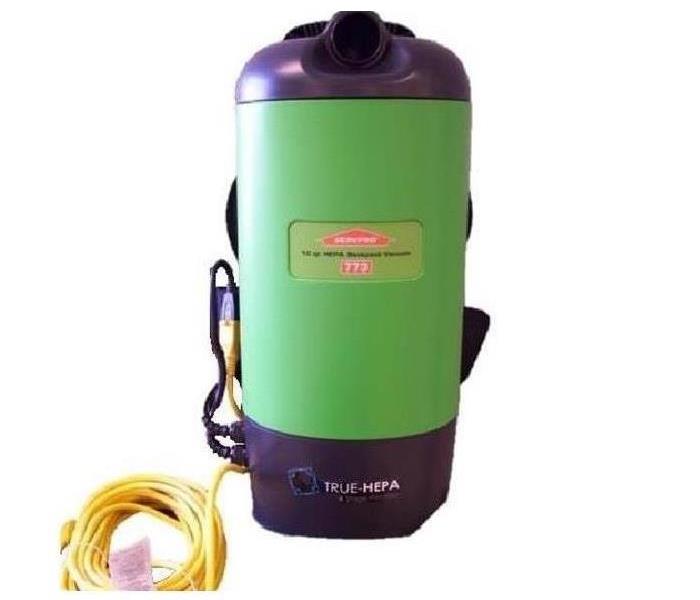Recent Mold Remediation Posts
Hidden Mold
2/1/2021 (Permalink)
Do you have an odor in your home and you just can’t determine what or where it is? If you can’t visibly see anything then there is a possibility it could be mold. Mold can smell like a musty odor, but it can also smell like earth, fruit, floral, chocolate, sour, oily or spicy.
Mold can be found in places you wouldn’t imagine. Under your flooring whether it be carpet, vinyl, or linoleum. It can be beneath your floorboards, wallpaper, even in the insulation inside the walls or above in the ceiling. Mold is often found underneath or behind cabinets and appliances. It’s not unusual for us to find it in the attic, crawlspace, and in your HVAC System.
If you have looked and looked and can’t find what’s causing that smell, contact SERVPRO of Fairfield County today. We have trained professionals and the right equipment to figure out where your odor is coming from.
Mold In Your Home?
10/11/2018 (Permalink)
Mold is everywhere. All around us. It is actually a fungus that is found both outdoors and indoors. Mold likes to grow in damp, warm and humid places.
Mold has different effects on people. It really depends on the type of mold, how long they were exposed, and the individuals sensitivity to mold. Some people are more sensitive to mold exposure and may have reactions that are more serious than others.
If you believe that you are feeling the effects of exposure to mold in your home, please consult your doctor right away. Also, an environmental hygienist. For remediation, contact SERVPRO of Fairfield County at (740) 756-7003.
We have trained professionals and specialized equipment for safe and timely clean up, drying, and remediation of mold in your home.
Follow These Safety Tips If You Suspect Mold
10/11/2018 (Permalink)
If you see visible mold, do not disturb it. You can inadvertently spread the mold infestation throughout your home. When mold is disturbed, the mold can release microscopic mold spores which become airborne and can circulate inside your home.
What to Do:
- Stay out of affected areas
- Turn off the HVAC system and fans.
- Contact SERVPRO of Fairfield County for mold remediation services.
What Not to Do:
- Don’t touch or disturb the mold.
- Don’t blow air across any surfaces with visible or suspected mold growth.
- Don’t attempt to dry the area yourself.
- Don’t spray bleach or other disinfectants on the mold.
About Our Mold Remediation Services
SERVPRO of Fairfield County specializes in mold cleanup and restoration, in fact, it’s a cornerstone of our business. Our crews are highly trained restoration professionals that use specialized equipment and techniques to properly remediate your mold problem quickly and safely.
Are Environmental Hygienists Really Necessary?
7/16/2018 (Permalink)
 Do You Need An Environmental Hygienist?
Do You Need An Environmental Hygienist?
When you can see (and smell) mold growing up the walls and on the surfaces of your home, do you really need a certified environmental hygienist to tell you that you have a problem and you need a proper mold cleaning? In short, the answer is yes. While you can find the mold that’s visible with the naked eye, an environmental hygienist can do so much more. The resources available to most homeowners only allow you to scratch the surface of mold identification and remediation.
So What Can an Environmental Hygienist Do That I Can’t Do?
Environmental hygienists are trained and certified in mold identification, mold cleaning, mold remediation, and more. Understanding mold infestations in the home is a complex science. Environmental hygienists can:
• Use complex instrumentation to detect mold in hidden places
• Identify the types of mold and the dangers they may pose to your home
• Ensure proper use of protective safety equipment when dealing with mold on surfaces and throughout your home
• Counsel on appropriate mold remediation methods
• Effectively address the source of the mold to prevent future outbreaks, including identifying leaks or humidity issues
What an environmental hygienist’s certification promises is safety. Environmental hygienists are certified to ensure they handle any mold contamination or infestation as safely as possible without further spreading the outbreak or causing additional issues that might damage your home.
Can’t I Just Use a Home Test?
Home tests aren’t as reliable as you think, and can often either lead you down the wrong path or cause greater frustration. You’re constantly surrounded by mold spores in your natural environment, so a mold test will always return false positives without pointing you to the source of a real infestation. An environmental hygienist’s equipment and knowledge can provide laser-sharp accuracy in pinpointing the actual source of a mold outbreak, and recommending mold cleaning and remediation solutions.
3 Reasons Not To Use Bleach for Mold Cleanup
7/16/2018 (Permalink)
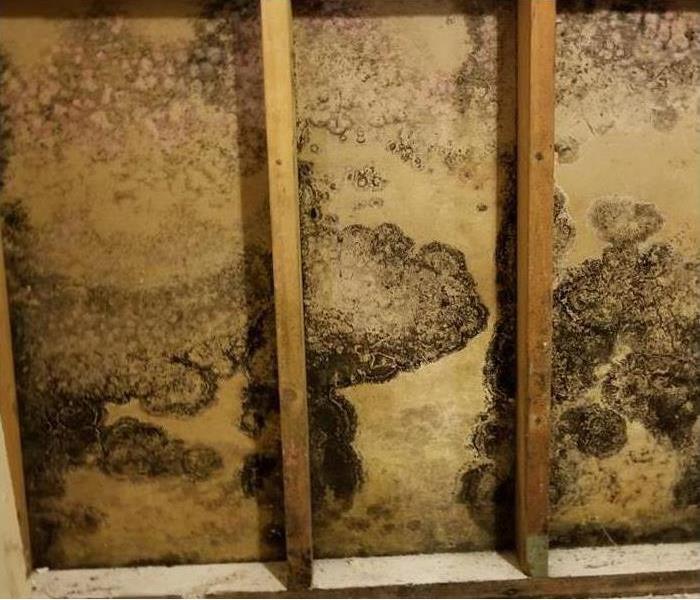 Give SERVPRO a call if you notice mold growing in your home or business.
Give SERVPRO a call if you notice mold growing in your home or business.
If your commercial property in has an infestation of mold, resist the urge to clean it with bleach. While the instructions on the bottle may promise proper disinfection, it is not effective for fungus cleanup and may actually make the problem worse. There are several reasons why it is not appropriate for mold remediation.
1. It does not kill mold. Bleach gives the appearance of eradicating mold without any real results. The change in color you see when applying this solution to help you clean up mold is merely the leaching of the color from the fungus. The mold is still there; it’s just in a lighter shade. It also is not meant to be used on porous surfaces. Mold, however, establishes its roots in porous surfaces, making it an ineffective solution.
2. It can make your mold problem worse. Rather than destroying mold growth and aiding in fungus cleanup, bleaching can actually encourage growth. Mold thrives in moist environments, and the solution in the bottle is mostly water. When you apply it to the area where the growth occurs, you are probably feeding the fungus more than you’re hurting it.
3. It is corrosive and can cause damage to the surfaces you are trying to save. In addition to being ineffective and counterproductive, bleaching can cause corrosion to the surface where the mold is growing. It can break down drywall and destroy the fibers in wood surfaces. When this corrosive element is combined with the toxic fumes it releases, it is not much better for your building than the mold that is growing there.
There are many solutions better suited to fungus cleanup than bleach. Mold remediation specialists can assess the damage and get rid of the problem with tried-and-true methods. It is best to avoid trying to resolve the issue yourself. Not only does bleaching not get rid of the mold problem, but it can also make the mold growth harder for the professionals to tackle
How Fast Will Mold Appear After Water Damage to Your Home?
7/13/2018 (Permalink)
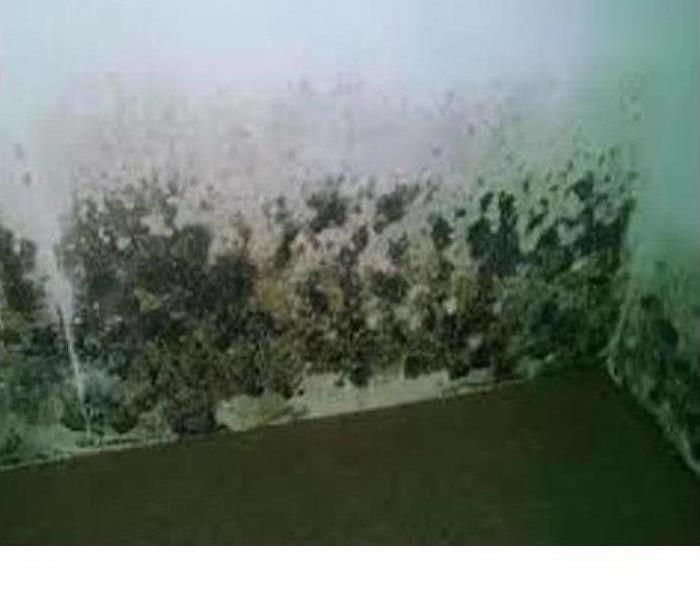 How Fast Will Mold Appear After Water Damage to Your Home?
How Fast Will Mold Appear After Water Damage to Your Home?
While water damage to your home is bad enough, there could be more damage just waiting to happen if get rid of the water and moisture in time. It takes just a little water for mold to grow, so when your home suffers water damage from a flood, broken pipe or faulty sump pump; there are a lot of places that mold can easily grow. So how fast does mold appear after water damage to your home?
It Depends.
There’s really no definitive answer to how fast mold can appear after there has been water damage. If you ask mold remediation experts, you will most often hear 24-48 hours. Many water damage and mold remediation companies have observed this first hand going to homes that have suffered from water damage. On the other hand, these same experts have seen homes that have experienced water damage and have witnessed no mold.
It gets even more confusing when you look at research experiments that scientists have performed to determine mold growth. In a 2006 article in the Journal of Occupational and Environmental Hygiene titled “Controlled Study of Mold Growth and Cleaning Procedure on Treated and Untreated Wet Gypsum Wallboard in an Indoor Environment”, researchers took drywall and immersed the bottom inch in water. The researchers observed the drywall pieces over an 8 week period for mold growth. Some of the drywall was treated with primer paint while others were left untreated and bare.
Surprisingly, the researchers didn’t discover any sign of mold growth until 2 weeks into the test. This is obviously way beyond the typical 24-48 hour window that is typically repeated and many times observed out in the field. These results only tested drywall and in one environment. The results have obviously differed in real situations of homes that have experienced water damage and observable mold growth. So what is different from these situations? To answer that, we have to understand how mold grows in the first place.
How Does Mold Grow or Happen?
Mold is microscopic in size and doesn’t really become apparent until it has grown or colonized. Mold is spread by mold spores which are carried by wind currents and are present in the air outside. About a billion mold spores can occupy a square inch of space. While there are more mold spores present in the air outside, mold spores also exist in our homes but at lower levels. Once mold spores are introduced to the right amount of moisture, humidity, temperature and food source, they begin to grow into what we dread as mold in our home. If left untreated, the mold can quickly colonize and grow out of control.
So what is a food source for mold? Mold needs a dead organic substance to feed off of and grow. If you look around your home, it is full of dead organic materials like wood, fabrics, drywall, insulation, leather, dirt and dust. With the right conditions like a flooded basement or busted pipe, mold can thrive. So how do you stop mold? Is there anything to prevent it?
Stop Mold Growth and Damage Before It Begins
The key to stopping mold growth before it begins is timing. If your home should suffer water damage, call the water damage cleanup and restoration professionals at SERVPRO of Fairfield County. They will remove all the water and treat any water damaged parts of your home before mold can take hold. If mold has started to appear, they can also remediate the mold as well. While you can’t remove the food source normally, you can take away the water and the moisture thus stopping mold from growing or happening.
Contact SERVPRO of Fairfield County today for water damage cleanup & restoration, as well as, mold remediation.
Mold Remediation in Commercial and School Buildings
6/1/2018 (Permalink)
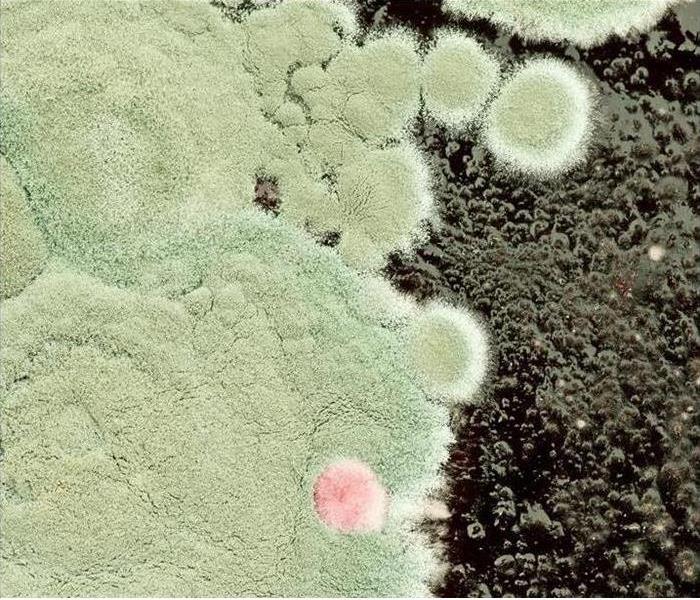 Call SERVPRO to Keep the Kids Safe from Mold Infestations
Call SERVPRO to Keep the Kids Safe from Mold Infestations
Mold invasions are a common problem in schools and commercial buildings. As these buildings age, their susceptibility to invasion increases due to factors like leaky roofs, tendencies for moisture retention, and the erosion of waterproofing material. However, learning more about mold remediation and building maintenance techniques can help guard against these unwanted infestations. Read this short article provided by SERVPRO to get information regarding this issue.
Mold Remediation in Schools. As reported by the Health Schools Network, children are at a greater risk of exposure to mold than their adult counterparts. This is the case because the organs of small children are still in the developmental stage. A child's lungs are disproportionately large in relation to total body mass. This means that inhaled mycotoxins can have a profound impact on the child's body. Unfortunately, the school setting often creates the right condition for the development of mold. This risk can increase as the school ages. Common areas for mold growth include storage closets, cafeterias, locker rooms, and bathrooms. The mold spores can then circulate throughout the school by way of the air ducts, one of the major factors contributing to "bad air." Clean ambient air quality provides a safer environment for our students.
For the prevention of these fungi from spreading in school buildings, it is important for school officials to have regular maintenance work and inspections scheduled and completed. Since malfunctioning HVAC systems and leaky pipes are the most frequently reported causes of mold proliferation, having this equipment and plumbing checked can drastically decrease mold growth in schools, or hopefully, prevent its occurrence.
Mold Remediation in Commercial Buildings. Just as school buildings are susceptible to mold infestations, commercial buildings can become a hotbed for the fungi. One of the common places for mold to grow within the commercial setting is the HVAC system. The systems that are not functioning optimally or are ill-equipped to handle the workload can generate moisture buildup. This can lead to mold growth as the spores within the air ducts will adhere to organic matter and develop into mold colonies. The mold can now spread throughout the office via the A/C network. SERVPRO can inspect and, if necessary, clean, sanitize and deodorize the HVAC system as part of a regular maintenance and cleaning program.
Call SERVPRO Now. To ensure that mold does not become a problem in your school or commercial business setting, securing a mold prevention and extermination service is important. Mold remediation can usually be prevented if proactive inspections and maintenance plans are followed. The IICRC-certified professionals of SERVPRO possess the advanced skills and knowledge, along with top-notch equipment, necessary to expedite and optimize all mold services.
Tips For Preventing Mold In Your Home
10/2/2017 (Permalink)
“Keep the house dry -- don't let water build up anywhere, ventilate damp rooms, wipe shower walls and doors after use.
Don't leave wet clothes in the washing machine where mold can quickly grow.
Wash shower curtains and bathroom tiles regularly with mold-killing products.
Don't have too many indoor plants -- especially in the bedroom -- as mold can grow in plant soil.
Fix any leaks or seepage in the house, indoors and out.
Put plastic over dirt in crawlspaces and keep them well ventilated.
Use exhaust fans in the kitchen and bathrooms.
Turn off humidifiers if you see condensation on windows.
Use dehumidifiers and air conditioners in basements and other areas of the house where mold tends to grow, especially in hot humid climates.
Clean dehumidifiers and humidifiers every week.
On concrete floors, remove carpet and use area rugs that can be lifted and washed, or install a vapor barrier over the concrete.”
For more information, please continue reading at: http://www.webmd.com/children/prevent-mold
Mold: What To Do
10/2/2017 (Permalink)
You may have seen sensational news reports that warn about the dangers of “black mold” or “toxic mold”. These reports can be alarming and confusing so it’s beneficial to get the facts to better understand mold.
Stachybotrys chartarum is the type of mold often called black mold, and it does produce allergens and irritants. However, many types of mold can produce allergens and irritants. Treat any mold with caution – stay out of affected areas and don’t touch or disturb the mold.
In as little as 48 hours, mold can quickly become a problem in your home or business when there’s a water intrusion, like a roof leak or leaking water line. Mold can cause health effects and can also cause significant damage to your property. SERVPRO of Beachwood / Shaker Heights / Cleveland Heights has the training, protective gear, and specialized equipment necessary to handle your mold problem.
If you have a mold problem in your home or business, consider the following facts:
- Significant mold growth can occur in 48-72 hours.
- Mold may present a greater risk to children, the elderly, and anyone with respiratory problems.
- A strong, musty odor may indicate hidden mold behind drywall or under carpeting.
What to Do:
- Stay out of affected areas.
- Turn off the HVAC system and fans.
- Contact SERVPRO of Beachwood / Shaker Heights / Cleveland Heights for mold remediation services.
What Not to Do:
- Don’t touch or disturb the mold.
- Don’t blow air across any surfaces with visible or suspected mold growth.
- Don’t attempt to dry the area yourself.
- Don’t spray bleach or other disinfectants on the mold.
Mold Growing On Drywall In Your Fairfield County Home
6/9/2017 (Permalink)
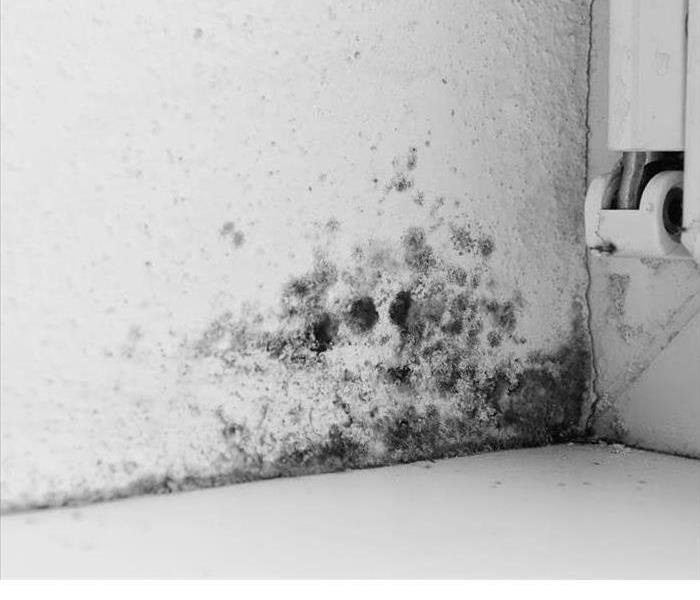 What Appears to be Mold Growing On Wall
What Appears to be Mold Growing On Wall
Dampness Encourages the Proliferation of Mold
Mold on drywall can create plenty of unnecessary structural damage and health effects if it is left untreated, even for a short time. Black mold, though it has gained unwarranted notoriety, is usually associated with this kind of damage. All fungi should be remediated to create a better home environment.
Short-term drywall damage can be caused by water, and long-term damage is the result of mold growth in your Fairfield County home being left to spread and multiply, leaving behind mold damage. When drywall is exposed to moisture, it shows water stains. After an extended period, the panels can be destroyed. The sandwiched cardboard separates from the gypsum, and the core loses its structural integrity.
Drywall which has lost structural integrity begins to sag slowly over time and needs replacing. Wet drywall, with its paper backing, can be an ideal breeding ground for mold. Fungi secrete digestive chemicals onto the organic source to feed, then reabsorbs them along with digestive materials for food. The process is not possible until the materials become damp or wet. Mold can start to grow on drywall in just twenty-four to forty-eight hours. Drying the walls out as fast as possible is the key to a solution which is effective.
Sheetrock wicks up water as well, meaning it picks up water even if it has not come into contact with water. Since drywall absorbs water from the air, it is critical to have your drywall evaluated and inspected if you have had any standing water or flooding in your home recently. Rapid water removal reduces the chances of mold growth.
Water can wick into drywall from the air or contact as fast as one inch per hour, which means if water sat in your home for just one day, it could absorb into your drywall as much as two feet high, creating a great breeding ground for mold.
SERVPRO of Fairfield County is standing by always to help you get water and moisture out of your home to prevent mold damage. With moisture meters, thermal hygrometers, and other special tools, they can even detect hidden moisture in your walls to ensure that they dry your home thoroughly in as little time as possible. Just give them a call at (740) 756-7003 anytime, day or night, when you notice wet drywall or the presence of mold.
Bleach Does Not Kill Mold Or Mildew?
5/10/2017 (Permalink)
“Chlorine bleach does not kill mold. Chlorine bleach does not kill mold spores that grow into mold. The notion that bleach kills mold is a myth. Bleach will only change the color of mold and temporarily slow the growth of mold. Eventually the mold will re appear and thrive digesting anything organic or cellulose in its path. The EPA Environmental Protection Agency and the manufacture of Clorox Bleach have both issued statement acknowledges that bleach does not kill mold.
One of the problems with chlorine bleach killing mold is that chlorine bleach is practically 100% water that helps to feed mold. Researchers have stated that the active ingredient in bleach begins to die off almost immediately after the manufacturing process has been completed. Furthermore, researchers have stated that chlorine bleach looses almost 50% of its strength within the first few month of storage and continues to degrade thereafter. “
For more information, please continue reading at: http://www.newtechbio.com/wiki/index.php?title=Does_Bleach_Kill_Mold_and_Mildew%3F
HEPA Vacuums
4/28/2017 (Permalink)
Choosing the Best HEPA VacuumFor those that have been adversely affected by mold illness, it is important that your living environment be maintained as a safe place where you will not be exposed to potentially harmful organisms. One tool to help you in this goal is a HEPA vacuum. In an ideal world, we would all have built-in central vacuums that exhausted directly to the outside. Since this is not an option for many people, the next best thing is to find the best HEPA vacuum for their situation.
WHAT IS HEPA?
A HEPA or high efficiency particulate air filter is a filter that removes 99.97% of particles that are 0.3 microns or larger. This high degree of filtration is important since there are many more very small mold spore fragments found than whole mold spores. The use of HEPA filtration helps ensure that these small particulates or fragments as well as the larger intact spores can be safely removed from the indoor environment. Although many vacuums may claim to have HEPA-like filtration, very few vacuums actually meet the rigid criteria to be called a HEPA vacuum. True HEPA vacuums not only have a HEPA filter but are also specially sealed so that no air is able to escape before passing through the filter. This means that the particles you vacuum up actually remain in the vacuum rather than being dispersed into the air that you breathe. HEPA filtration is also important for people that suffer with allergies to dust mites, pets, pollen, or other environmental allergens.
Mold Mitigation For Businesses
4/18/2017 (Permalink)
SERVPRO Can Mitigate Business Losses Due to Mold
When mold damage hits an office, it can be difficult to immediately tell how much business is going to be impacted by restoration efforts. In some cases, workers may not even notice SERVPRO personnel and operations, but in others, a full temporary closure of the building may be necessary. We make every effort to keep the business running as usual during a mold remediation, but knowing what could and could not happen makes the difference between a company well-prepared for the challenges ahead and one that will struggle.
If Mold Damage is Limited:
Depending on where the mold damage is in your Fairfield County office building, day-to-day operations may continue entirely unabated. Many cases of mold damage occur in hard-to-reach or out-of-the-way areas, meaning that any quarantines and machinery we put in place will be mostly avoided by most staff. However, other cases may come up in more populated areas including office spaces, break rooms and canteens, and bathrooms, directly impeding the routines of you and your employees. Business is only significantly interrupted in these cases if the mold is growing in a building's sole bathroom. If this is the case, bringing in portable toilets may be necessary.
If Mold Has Spread
If SERVPRO determines that the mold damage has spread beyond a small area, more drastic measures may be taken. In some cases, we will have to quarantine off multiple rooms and do significant work in there, as well as regularly measuring other areas for signs and symptoms of mold growth. If the mold is particularly far-reaching or has the potential to cause health effects, we may temporarily close the building until it is safe to reopen. In either case, larger mold colonies have little to no chance of not interrupting your business and must be dealt with quickly so that the situation doesn't get further out of hand.
SERVPRO of Fairfield County has the tools, training, and technicians to handle mold damage in offices of all sizes. Contact the mold remediation professions at the first sign of mold growth at (740) 756-7003
Follow These Mold Safety Tips If You Suspect Mold
5/16/2016 (Permalink)
If you see visible mold, do not disturb it. You can inadvertently spread the mold infestation throughout your home. When mold is disturbed, the mold can release microscopic mold spores which become airborne and can circulate inside your home.
What to Do:
- Stay out of affected areas.
- Turn off the HVAC system and fans.
- Contact SERVPRO of Fairfield County for mold remediation services.
What Not to Do:
- Don’t touch or disturb the mold.
- Don’t blow air across any surfaces with visible or suspected mold growth.
- Don’t attempt to dry the area yourself.
- Don’t spray bleach or other disinfectants on the mold.
About Our Mold Remediation Services
SERVPRO of Fairfield County specializes in mold cleanup and restoration, in fact, it’s a cornerstone of our business. Our crews are highly trained restoration professionals that use specialized equipment and techniques to properly remediate your mold problem quickly and safely.






 24/7 Emergency Service
24/7 Emergency Service





